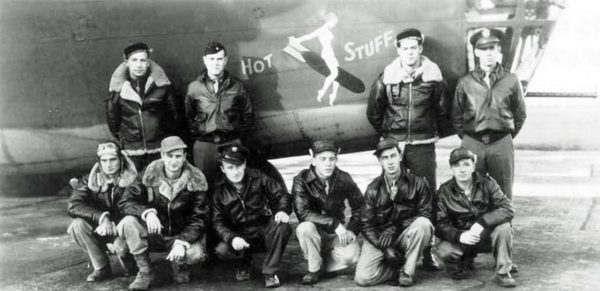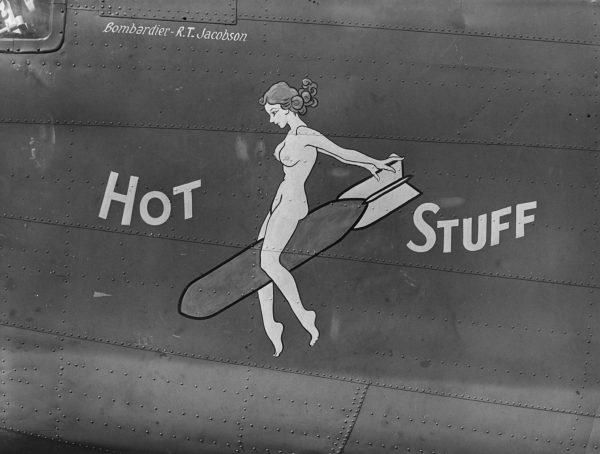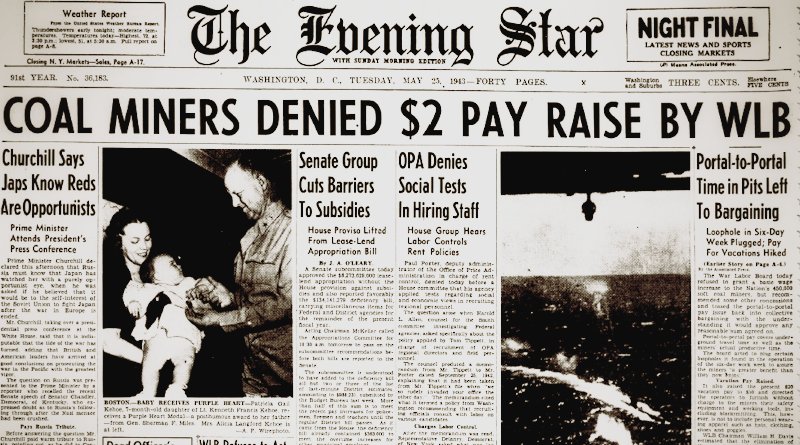World War II Chronicle: May 25, 1943
Click here for TODAY’S NEWSPAPER
Let’s consider the story discussing whether the Soviet Union will attack neighboring Japan once the war in Europe is over: First, we are a long way from the end of the war, but we are now at least to the point when we can consider it’s end. Germany’s once-feared fleet of U-boats have taken a serious beating lately. Hundreds of thousands of German and Italian soldiers have been captured in Tunisia. The Luftwaffe is being pounded in the Mediterranean. American and British air forces are dropping record numbers of bombs over Germany. The war has a far brighter outlook today than it did a year ago. We are still in a long and dark tunnel as far as the war goes.
Recently Ernie Pyle wrote that some of those captured German soldiers thought it was ridiculous that Americans could invade Nazi-occupied Europe. The Germans have a point. Look how mighty and seemingly unstoppable their military was at the beginning of the war. Despite all their power, they never had a serious chance of crossing the channel between France and England. At some point we will have to cross that channel. Or the Mediterranean. Or both. Being able to win in North Africa and successfully invading Europe and overcoming a continent full of prepared defenders are two entirely different challenges. Africa required a massive logistical effort and resistance was light compared to what lies ahead. The amount of men, ships, planes, and tremendous amounts of supplies needed will require more than what humans have ever assembled before. The Germans will be fighting in their own backyard this time and won’t have the logistical challenge of getting everything across waters patrolled by the Royal Navy. Plus how many hundreds of thousands of American lives — maybe millions — could it take to force a landing and fight across Europe? Does the United States have the stomach for that?
But back to the article, it is fascinating seeing the balancing act between Churchill, Roosevelt, and Stalin. Communism poses a greater threat to Western democracies than Nazi Germany. Stalin is opportunistic and will swindle us at any opportunity. He is every bit as much an enemy as Hitler — numbers-wise he is worse — but unfortunately we need his Red Army wiping out millions of German soldiers on the Eastern Front. Russia fared poorly in their last war against Japan, so who knows how they would do this time…
Sgt. George A. Eisel, the sole survivor when the B-24 Hot Stuff struck a mountain on Iceland on May 3 and crashed, is pictured on page three. Eisel served as the crew’s tail gunner for 25 missions. Other original crew members killed were: Capt. Robert H. Shannon, pilot; Capt. James E. Gott, navigator; Master Sgt. Lloyd C. Weir, engineer and crew chief; Tech. Sgt. Kennith A. Jeffers, radio operator; and Staff Sgt. Paul H. McQueen, gunner. Three chaplains were also hitching a ride: Bishop Adna W. Leonard, Col. Frank S. Miller, and Maj. Robert H. Humphrey.

We discussed the passing of Lt. Gen. Frank M. Andrews, who commanded the European Theater of Operations and flew as co-pilot. Brig. Gen. Charles H. Barth Jr. served as Andrews’ chief of staff. His father Brig. Gen. Charles H. Barth Sr. fought Geronimo before serving three tours in the Philippines and commanded the 7th Infantry Division in France during the World War. Also lost were Col. Morrow Krum, public relations officer; aides Lt. Col. Fred A. Chapman and Capt. Joseph A. Johnson; and secretary Maj. Theodore C. Totman.
Five of Hot Stuff’s crew members were bumped from the flight to make room for Andrews and his entourage. The bombardier, 1st Lt. Robert T. Jacobson will fly another 14 missions in the Pacific on B-29s. Staff Sgt. Joseph L. Craighead is aboard another B-24 that crashed during a raid on Ploesti in August 1943, but he survives. I can’t find any information on copilot John H. Lentz, gunner/engineer Staff Sgt. Grant G. Rondeau, or gunner Staff Sgt. George D. Farley…

An American minister who served in China gives a first-hand account of the barbarity the Chinese faced as Japanese troops searched for the Doolittle Raiders last year (see page four)… George Fielding Eliot column on page 10… Sports section begins on page 16… An Army Air Force crew is pictured honing their skip-bombing technique near Childress Army Air Force Base in Texas. The plane appears to be a Beechcraft AT-11 Kansan, which is used to train bomber pilots. Skip-bombing has been around since before the war, and American air crews used it successfully during the Battle of Bismarck Sea in March. Royal Air Force crews used the tactic with specially constructed bombs that were spun backwards before dropping to destroy dams along the Ruhr River in Germany.
Roving Reporter by Ernie Pyle
IN TUNISIA — (By Wireless) — A few weeks ago I wrote a column describing the winter’s battleground in Tunisia, in which I said there wasn’t much evidence over the countryside of the fighting that had gone on. That was the Central Tunisian battlefield — the one we fought over all winter.
But now we have a new battlefield to look over, the Northern one, and it looks vastly more warlike than the Southern one. There are two reasons for this — the fighting was more concentrated and on a much greater scale, and the Germans collapsed so quickly they had no time to retrieve vehicles and clean up the battlefields as they did in the South.
Today there are roads in Northern Tunisia that are littered for miles at a stretch with wrecked and burned-out vehicles. Sometimes a skeleton of a tank or a big truck sits right in the middle of a road and you have to drive around it. In spots you can see two or three dozen wrecked tanks scattered across a mile-wide valley. In many places the roads are rough from filled-in shell holes.
In the first day or two after the finish you would still see an occasional blanket-covered body lying at the roadside. Frequently you see one or two German graves, where victims of vehicle strafing are buried. And as you drive along your nose tells you now and then of one that the burial parties missed.
I am constantly amazed and touched at the number of dogs and mules killed on the highways by artillery and strafing planes.
Practically all the bridges in Northern Tunisia have been blown up. You detour around the smaller ones. Over the larger streams American and British engineers have thrown up sudden and magnificent steel bridges, or laid pontoon bridges.
Only a few of the towns in Central Tunisia were really wrecked by shellfire, but in Northern Tunisia all the towns along the line of battle have been truly destroyed. Bizerte is the most completely wrecked place I have ever seen. It was a large city, and a beautiful one. It is impossible to picture in words what it looks like now.
If you remember World War pictures of such places as Verdun, that is the way it is. Nothing could possibly have lived through the months-long bombing that Bizerte took. Those who say a city can’t be destroyed by bombing should come and see Bizerte.
As soon as the Tunisia war was over the Arabs began flocking back to their homes. They had been cleaned out of the battle area by both sides, for two reasons — to keep them from getting hurt, and because neither side trusted them.
Most of them were simply evacuated to safe hills in the rear, but those under suspicion were arrested and put in outdoor prison camps while the fighting was going on.
They come back across country now in long caravans. Scores of Arabs are in each group, with their sheep and their cattle, their burros and their kids. They are a dirty and disheartening lot.
Their junklike belongings are piled high on two-wheeled carts. I saw one cart with 14 oxen hitched to it.
The women usually have large bundles on their backs. Now and then one Arab will give you the Victory sign and say “Bon jour,” but most of them pass in silence. For the Tunisian Arab was well sold by German propaganda.
Ferryville and Tunis are the two places where fantastic demonstrations were put on as the Americans and British entered and released the cities from their captivity. The wild Ferryville demonstration has already been written about, but I am mentioning it again in order to tell a little story.
Chris Cunningham of the United Press and I shared a tent and traveled together quite a bit in this Northern campaign. Chris is a stocky fellow, with black whiskers. He looks pretty tough, although he is rather bashful.
When he drove in to Ferryville in his jeep he was immediately surrounded and overpowered by jubilant men, women and children, throwing flowers and shouting “Vive la France!” and “Vive l’ Amerique!”
In the midst of this hubbub, a pompous looking gentleman, a gruffly dignified Frenchman of the old school, arrived on the scene. He stood for a moment at the curb, surveying the outburst with what appeared to be disapproval. Then he took a deep breath, brushed the common herd aside with both hands as though he were swimming, reached over into the jeep and kissed Chris first on one cheek and then on the other. That accomplished, he turned and strode promptly away.
Chris hasn’t heard the last of it yet.
Evening star. (Washington, D.C.), 24 May 1943. Chronicling America: Historic American Newspapers. Lib. of Congress.
https://chroniclingamerica.loc.gov/lccn/sn83045462/1943-05-24/ed-1/
